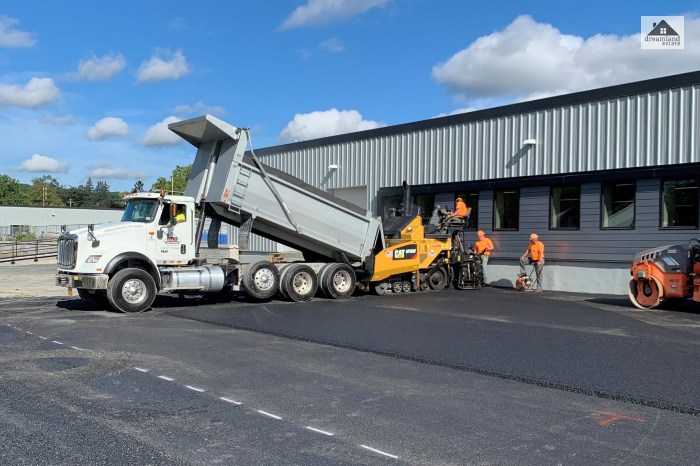What Are Asphalt Millings? How To Use It? Why Do You Need It?

If there is one thing that people have been searching about a lot in recent times, it is about Asphalt Millings. If you are also looking for the same, then you have reached the right place.
The word millings come from mills. These are the places where a raw material is processed in order to get a product that can be used in certain industries. One of the most important materials that is searched these days for milling is asphalt.
Keep reading this blog till the end to learn more about asphalt millings and why is it important…
Asphalt Millings 101: Everything You Need To Know About It!

If you are thinking about getting yourself a new pavement for your house or the parking lot, you must try to consider one of the most popular choices and options that is trending at present— asphalt, or recycled asphalt.
In case you want to know about how to use asphalt millings for the construction of pavements and how it can benefit, you have reached the right place. Keep reading this article till the end to learn everything you need to know about asphalt millings.
What Are Asphalt Millings?

If you are planning to live sustainably and make more eco-friendly choices as you go by, choosing asphalt millings is one of the beest things that you can do.
According to FHA of the Department of Transportation of the United States, Asphalt Millings are of the category that falls under the byproducts materials that are used in the construction of pavements. Also known as Reclaimed Asphalt Pavement or RAP, it is a term that is used to refer to the “removed and/or reprocessed pavement materials containing asphalt and aggregates.”
The report states that these are “generated when asphalt pavements are removed for reconstruction, resurfacing, or to obtain access to buried utilities.” However, through the process of milling, these byproducts can be put to good use. “When properly crushed and screened, RAP consists of high-quality, well-graded aggregates coated by asphalt cement,” the FHA states.
According to the NYC’s DOT, asphalt millings are a “mixture of 93-97% mineral aggregates and 3-7% asphalt cement binder (% by weight).”
So, to keep it short and simple, asphalt millings are the byproducts or construction wastes that are left behind after the manufacturing of concrete and fresh asphalt for construction.
Procedure: How Is Milling Done?

When talking about this, the first thing that you must know about is the process of milling. So, what is it?
If you search the internet, the meaning of the word ‘milling’ will be displayed somewhat like this:
- “The act or process of grinding, especially grinding grain into flour or meal”
Or
- “The operation of cutting, shaping, finishing, or working products manufactured in a mill.”
Thus, one thing that you need to keep in mind is that the process of creating asphalt millings involves cold mining machines that human workers in the mills or construction sites work on. In this process, the workers or laborers dig up the asphalt surface that lies and exists and then these are grinded and crushed with the help of machines.
These crushed and grinded asphalt wastes are then passed on through sieves and sorted according to their specific sizes. In most cases the size of the asphalt millings are 1.25 inches. And then they are loaded into the trucks that drive them to the factories that have milling machines.
Benefits: Why Are Millings Important?

According to the data and other statistics, every year, the United States of America produces up to “41 million metric tons (45 million tons) of RAP.” However, if there is one thing that we have learned so far in the journey of technology and other ecological awareness, it is the fact that you can recycle almost every other form of byproducts.
Apart from the fact that using asphalt millings is a great way of recycling the construction waste. There are a number of reasons why you should use them. Here are some of the reasons why millings are important:
1. Eco-friendly
The first reason why using asphalt millings is a great option for you is because it is a step towards eco-friendly and sustainable growth. Using asphalt millings for the construction of the pavements and parking lots means that you are using recycled materials. These byproducts or waste would be disposed of in the ocean if they are not put to use.
In other words, using asphalt millings is a step towards living green. It not only ensures that the pollution is under control, but it also limits and reduces the carbon footprints. This is because the carbon footprints are much lower compared to the manufacturing of fresh asphalt.
2. Sturdy
Asphalt is one of the most versatile elements that are used in construction purposes. However, when it comes to changing weather conditions, it is very much prone to mechanical and biological weathering and erosion. However, that is not the case with asphalt millings.
Because of the processes that it goes through while becoming the byproduct, asphalt millings are tougher in nature. They are also much more porous than any other concrete material which almost makes it easier for the water to get drained and damage the pavement.
3. Cheaper And Affordable
Last but definitely not least, of all the reasons why you should choose to use asphalt millings is the fact that these are extremely affordable even when it comes to maintenance. If given the choice to go between the asphalt millings or ordinary asphalt or any other pavement materials. You should always stick to the former for its durability and compact nature.
Properties Of Asphalt Millings: Physical And Mechanical Properties

Here is a chart published by the Federal Highway Administration Research and Technology that states the exact properties of the asphalt millings that you should know about:
| Property | RAP Property | Typical Range of Values |
|---|---|---|
| Physical Properties | Unit Weight | 1940 – 2300 kg/m3(120-140 lb/ft3) |
| Moisture Content | Normal: up to 5%Maximum: 7-8% | |
| Asphalt Content | Normal: 4.5-6%Maximum Range: 3-7% | |
| Asphalt Penetration | Normal: 10-80 at 25°C (77°F) | |
| Absolute Viscosity or Recovered Asphalt Cement | Normal: 4,000 – 25,000 poises at 60°C (140°F) | |
| Mechanical Properties | Compacted Unit Weight | 1600 – 2000 kg/m3(100-125 lb/ft3) |
| California Bearing Ratio (CBR) | 100% RAP: 20-25%40% RAP and 60% Natural Aggregate: 150% or higher |
Wrapping It Up!
In case you were searching about millings or asphalt millings, I hope that this blog has been of help to you. If there are any other queries related to the same, feel free to let me know.
All you need to do is scroll down till you reach the bottom of the page and then leave your suggestions, doubts, and queries in the comment box. And I will be there to answer them all for you.
Read Also:











Leave A Reply